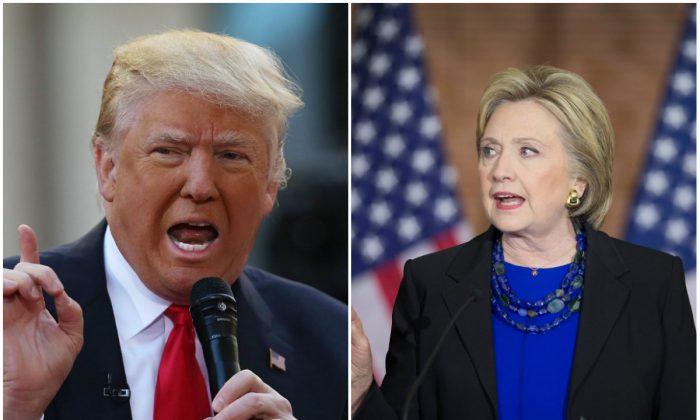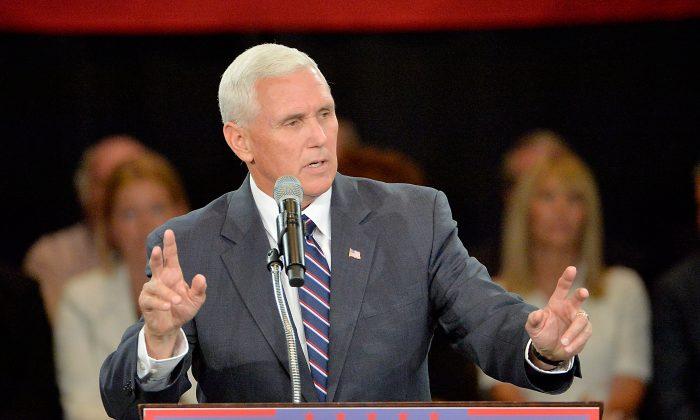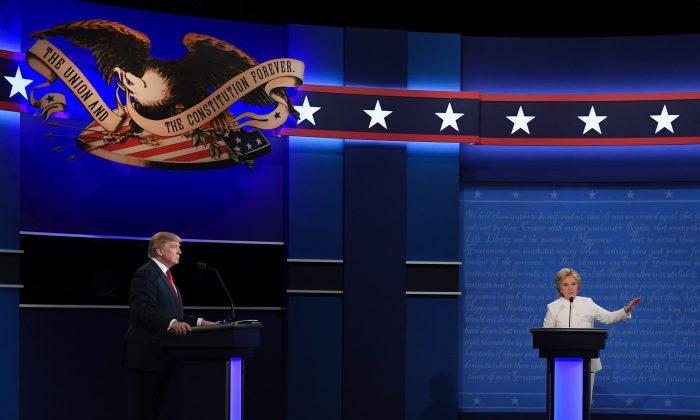Voters are taking to the polls in five states on April 26, and frontrunners Hillary Clinton and Donald Trump look to increase their delegate lead over the competition.
Most of the states are small, and have a small percentage of delegates, with the exception of Pennsylvania.
However, the amount of delegates won on the Republican side, in particular, will have a major impact on whether or not Trump gets to the required majority of the delegates. He needs 1,237 to get the nomination on the first ballot.
1. Pennsylvania and Maryland
There are 5 states going to the polls: Connecticut, Delaware, Maryland, Rhode Island, and Pennsylvania. The prize is Pennsylvania, and a lot of focus on the trail has been on this large swing state which will be an important factor in the general election matchup.
On the Democrat side, the focus is on Philadelphia; the site of the Democratic National Convention this summer, and a city split between minorities and college students, making it a battleground between Bernie Sanders supporters and Clinton’s base.
Similarly to Philadelphia, cities like Baltimore in Maryland should play to Clinton’s support base, but there are a lot of colleges in the area, which have the demographic that favors Sanders.
For Republicans, Allegheny county in Pennsylvania—which includes Pittsburg—is important insofar as it has more GOP voters than anywhere else in the state.
Other places that could put a dent in Trump’s dominance is Baltimore County where anti-Trump forces are in full force.
According to Politico reports, Baltimore County is crucial for the other GOP candidates. It touches two of the three districts anti-Trump forces believe are the best chances to defeat the frontrunner: the 3rd and 7th districts.
2. Connecticut, Rhode Island, and Delaware
In Delaware, most votes are coming from New Castle County where the vote is split down a partisan line—the capital, Wilmington, goes overwhelmingly Democratic, driven by a large minority population.
The city was 13 percent of the overall statewide electorate in the 2008 Democratic primary, but only 2 percent of the 2012 Republican primary, according to reports by Politico.
In Connecticut and Rhode Island, Hillary Clinton holds sizable leads, having won by a large margin in New York, and it’s expected that both will follow suit.
On the Republican side, Delaware, Rhode Island, and Connecticut are a wash for Donald Trump, with neither Ted Cruz nor John Kasich are campaigning very much.
3. The Projected Winners
Both Donald Trump and Hillary Clinton are projected to win, if not sweep, in all five states.
In Pennsylvania, Clinton is up by 16 percent and Trump is up by 21 percent.
In Maryland, Clinton is up by 24 percent and Trump up by 21 percent.
In Connecticut, Clinton is up by 5 percent, and Trump is up by 27 percent.
In Rhode Island, Clinton is up by 2 percent and Trump is up by over 30 percent according to FiveThirtyEight.
In Delaware, Clinton is up by 7 percent and Trump is up by over 30 percent.
(All polls taken from Real Clear Politics averages unless otherwise noted.)
4. The Delegates
On the Republican side, 172 delegates are up for grabs, and on the Democratic side, 384 pledged delegates.
Neither side can decisively get the nomination, but if projections of large margins of victory for Trump and Clinton stand, both will be that much closer to solidifying the nomination before the first ballot at each of the parties’ respective conventions.
Currently Hillary Clinton has a sizable lead over contender Bernie Sanders with 1,443 pledged delegates to the Vermont Senator’s 1,208.
Trump has 846 delegates to Cruz’s 544 delegates. Even with all 172 delegates at stake, Trump would not have enough to get the nomination yet, but he would be in a much better position, with 1,018 delegates.
Based on projections by FiveThirtyEight, Trump should manage to get around 100 delegates, but will probably lose a lot of the remaining delegates to a loophole in the Pennsylvania primary that allows for 54 of the 71 delegates to vote unbound.




